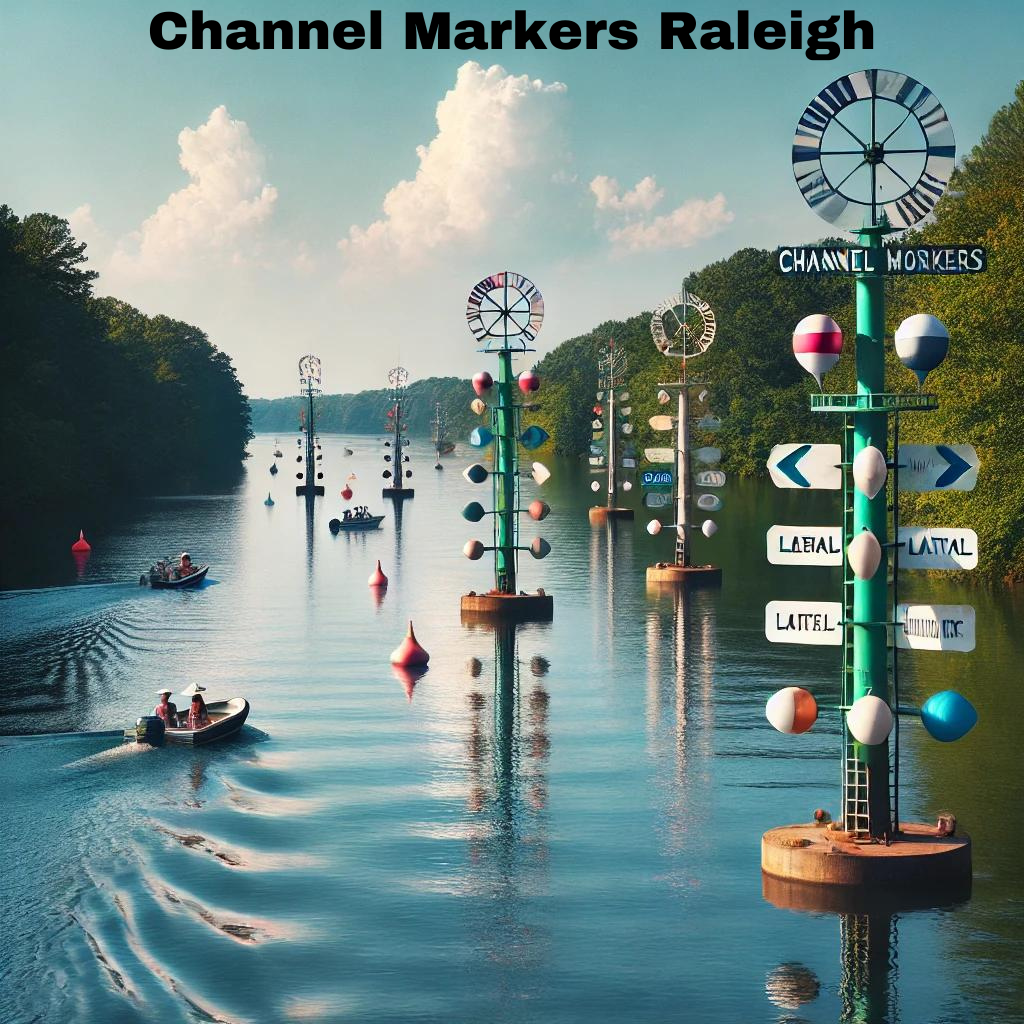Nestled in the heart of North Carolina, Raleigh isn’t just the state’s capital; it’s a city that boasts an array of natural and man-made waterways, essential for recreational and commercial activities. Channel markers, those often overlooked yet crucial components, play a significant role in ensuring the safe navigation of these waters. This article delves deep into the world of channel markers in Raleigh, exploring their importance, types, and the specific roles they serve within the city’s vibrant waterborne life.
The Importance of Channel Markers in Raleigh’s Waterways
Raleigh’s development and recreational activities heavily rely on its waterways. From the serene stretches of Lake Johnson to the bustling boat lanes of Falls Lake, these waters see a variety of uses. Channel markers are pivotal in these settings, providing guidance and safety information to boaters and helping to prevent accidents. They ensure that everyone, from leisure kayakers to professional watercraft operators, can enjoy the water safely and responsibly.
Types of Channel Markers Found in Raleigh
Channel markers vary greatly, each type serving a unique purpose:
- Buoys: These floating markers anchor securely and indicate safe passages, underwater hazards, or areas that boats should avoid.
- Beacons: Unlike buoys, beacons attach directly onto the waterway’s bed and commonly mark channels and turning points.
- Lateral Markers: These specialized markers indicate the sides of channels. In Raleigh, you’ll see them displaying red or green colors to denote the port (left) and starboard (right) sides of channels when entering from the sea or a larger body of water.
- Cardinal Markers: These are critical in showing the direction of safe water at a junction or around a hazard. They use a combination of colors and shapes to provide clear navigation cues.
Navigational Aids and Their Role in Raleigh’s Water Management
In Raleigh, channel markers do more than guide; they are part of a larger system of navigational aids that include lights, sound signals, and day markers. Local authorities meticulously manage this system to maintain a high standard of maritime safety. The placement and maintenance of these markers are critical, especially given Raleigh’s frequent weather changes and the potential for water levels to fluctuate rapidly.
Educational and Environmental Considerations
The city also leverages channel markers as educational tools. Informational signage on larger buoys and beacons often includes data about local wildlife, ecological notes, and water quality tips, encouraging environmental stewardship among Raleigh’s residents and visitors.
Challenges and Innovations
Managing channel markers in a dynamic environment like Raleigh comes with its challenges. These include ensuring markers are visible and stable despite weather conditions, and keeping them updated with the latest navigation technology. Innovations such as solar-powered light markers and GPS-enabled buoys are becoming more prevalent, offering more reliable and eco-friendly solutions to old challenges.
The Role of Channel Markers in Public Safety and Education
In Raleigh, the presence of channel markers goes beyond mere navigational assistance; they serve as vital components in public safety education. Local authorities and water safety organizations often conduct workshops and training sessions focused on how to read and understand these markers. This education is crucial for reducing accidents and improving overall safety on the water, ensuring that both residents and visitors know how to navigate these spaces safely.
Community Engagement and Channel Markers
The involvement of the Raleigh community in the maintenance and monitoring of channel markers is a testament to the city’s commitment to collaborative care of its waterways. Volunteer groups often participate in clean-up drives and are active in reporting damaged or displaced markers to the authorities. This community engagement not only helps maintain the markers but also fosters a sense of ownership and responsibility among the locals, enhancing the communal bond and pride in Raleigh’s natural resources.
Environmental Impact of Channel Markers
While channel markers are essential for safety and navigation, they also have an environmental angle. Designers and deployers consider ecological impact carefully to minimize disruption when designing and deploying these markers. For instance, they design markers to be as unobtrusive as possible, avoiding significant disturbances to aquatic life. Moreover, authorities use environmentally friendly materials that do not leach harmful chemicals into the water, supporting the health of the ecosystem.
Technological Advancements in Channel Marker Systems
Advancements in technology have significantly improved the functionality and effectiveness of channel markers in Raleigh. Manufacturers equip modern markers with LED lighting, which is both energy-efficient and highly visible, even in adverse weather conditions. Additionally, some markers now include sensors that collect data on water conditions, such as temperature and flow rates, and provide valuable information for environmental monitoring and research.
The Future of Channel Markers in Raleigh
Looking towards the future, Raleigh is poised to integrate more advanced technologies with its channel markers. Plans are underway to incorporate smart technologies that can communicate directly with boats, providing real-time navigational updates and warnings. This integration of IoT (Internet of Things) technology will not only enhance safety but also pave the way for a new era of smart waterway management in urban areas.
Conclusion
In Raleigh, channel markers are more than just navigational aids; they are integral to the safety, education, and environmental awareness of all who use the city’s waterways. Whether you’re a seasoned sailor or a casual canoeist, understanding and appreciating these markers is essential for a safe and enjoyable journey on Raleigh’s waters.

